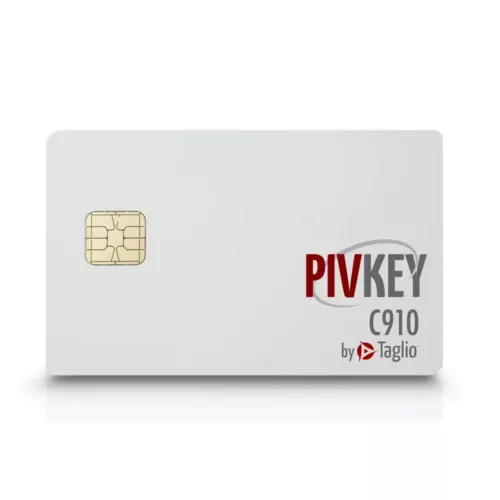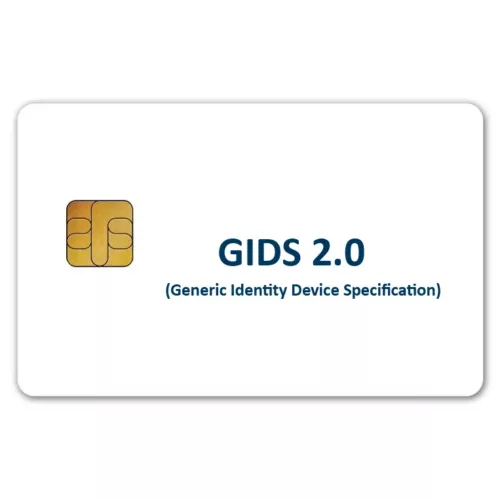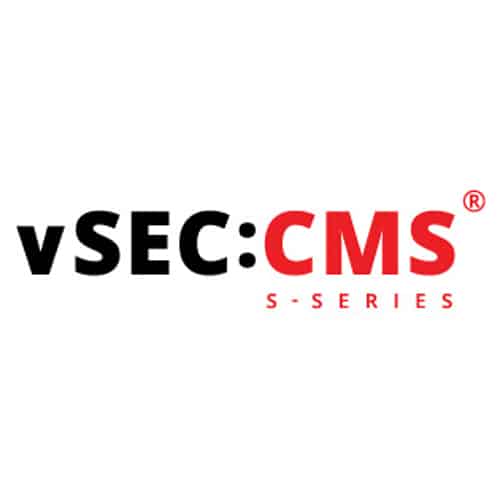Identity and Access Management (IAM) is a framework of policies, technologies, and processes that ensures the right individuals have appropriate access to resources within an organization’s information technology environment. IAM plays a crucial role in maintaining security, confidentiality, and integrity of sensitive data by controlling and managing user identities and their associated privileges.
IAM can help streamline access control in complex, multi-cloud environments. Today, corporate networks connect to on-premises, remote, and cloud-based (SaaS) apps and data sources. A wide range of users need access to these resources for various purposes, including human users (employees, customers, contractors) and non-human users (bots, IoT devices, automated workloads, APIs).
IAM systems allow companies to assign a single digital identity and set access privileges for each user. That way, only authorized users can handle company resources, and they can only use those resources in ways the company permits.
Identity Lifecycle Management
Identity Lifecycle Management (ILM) is a fundamental aspect of Identity and Access Management (IAM) that focuses on managing the entire lifecycle of user identities within an organization. It involves the processes, policies, and technologies used to handle the creation, modification, suspension, and termination of user identities, including employees, contractors, partners, and customers, throughout their association with the organization.
The identity lifecycle typically includes the following stages:
Onboarding: This is the initial phase when a user joins an organization. During onboarding, the user’s identity is created in the IAM system, and appropriate access privileges are assigned based on their role and responsibilities. This could include granting access to specific applications, resources, and data necessary for their job.
Maintenance: As users continue their association with the organization, their identity information might change. This could be due to changes in roles, responsibilities, or personal information. IAM systems should be equipped to handle such modifications while ensuring that access rights remain up-to-date and appropriate for the user’s current position.
Suspension/Temporary Access: In some cases, a user may need to have their access temporarily suspended. This could be due to extended leave, project changes, or other reasons. IAM should allow for a smooth process of temporarily disabling access and then re-enabling it when needed, preventing unauthorized access during the suspension period.
Offboarding: When a user leaves the organization, their identity and access must be properly managed to prevent any security risks. Offboarding involves revoking all access privileges associated with the user’s identity, disabling accounts, and securely archiving or deleting user data as per organizational policies and legal requirements.
Effective Identity Lifecycle Management offers several benefits:
Security: Properly managing user identities throughout their lifecycle ensures that users only have the necessary access rights at any given time. It reduces the risk of unauthorized access to sensitive information and helps prevent security breaches resulting from excessive or outdated privileges.
Efficiency: Automating identity lifecycle processes streamlines administrative tasks and reduces the burden on IT staff. This allows for faster onboarding and offboarding procedures, enabling organizations to adapt quickly to changes in workforce dynamics.
Compliance: ILM plays a crucial role in ensuring compliance with industry regulations and data protection laws. By keeping track of user access and managing it effectively, organizations can demonstrate adherence to various compliance requirements.
Auditability: An organized and well-documented identity lifecycle management process provides clear records of when and how access rights were granted, modified, or revoked. This audit trail can be valuable in investigating security incidents or proving compliance during audits.
Access Control
Access control is a fundamental concept within Identity and Access Management (IAM) that refers to the process of regulating and managing user access to resources, systems, applications, and data within an organization’s IT environment. It ensures that the right individuals are granted appropriate permissions while preventing unauthorized users from gaining access to sensitive information.
In the context of IAM, access control involves the following key components:
Identification: The process of identifying individual users and verifying their claimed identities. This is typically achieved through the use of unique identifiers, such as usernames or email addresses, which are associated with specific user accounts in the IAM system.
Authentication: The process of verifying the identity of users to ensure they are who they claim to be. Authentication methods can vary, including something a user knows (e.g., passwords, PINs), something they have (e.g., smart cards, eTokens), or something they are (e.g., biometric data like fingerprints or facial recognition).
Authorization: Once a user’s identity is authenticated, the IAM system determines the level of access they should be granted based on predefined policies and permissions. Authorization involves granting the appropriate privileges, such as read, write, or execute permissions, to access specific resources or perform certain actions.
Least Privilege: The principle of least privilege is a crucial aspect of access control in IAM. It states that users should be granted the minimum level of access necessary to perform their job responsibilities. By limiting access to only what is required, the potential damage caused by a compromised account is minimized.
Access Policies: IAM systems use access policies to define rules and criteria for granting or denying access to resources. These policies can be based on user roles, group memberships, time of access, location, and other contextual factors.
Audit and Monitoring: To ensure the effectiveness of access control measures and for compliance purposes, IAM systems often include auditing and monitoring features. These functionalities track user access activities, providing logs and reports that help detect suspicious behavior or unauthorized access attempts.
Revocation: Access control includes the capability to revoke or remove access rights when they are no longer required or when a user’s association with the organization ends. This process is essential for ensuring that ex-employees, contractors, or partners cannot continue to access sensitive information.
Authentication and authorization
Identity and Access Management (IAM) systems go beyond merely creating identities and assigning permissions; they also play a crucial role in enforcing these permissions through authentication and authorization.
Authentication is the process by which users verify their identity. When a user seeks access to a specific resource, the IAM system verifies their user credentials against the stored credentials in the directory. If the provided credentials match the stored ones, access is granted.
While a simple username/password combination offers a basic level of authentication, modern identity and access management frameworks incorporate additional layers of authentication to bolster security against cyber threats. These extra layers provide enhanced protection, ensuring that only authorized users with the appropriate level of verification can access sensitive resources.
Multi-Factor Authentication (MFA): MFA is a security mechanism that requires users to provide multiple forms of identification before gaining access to a system or application. Typically, it combines something the user knows (e.g., password), something the user has (e.g., a smartphone or token), and something the user is (e.g., biometric data like fingerprint or facial recognition). By incorporating multiple factors, MFA enhances security and reduces the risk of unauthorized access even if one factor gets compromised.
Single Sign-On (SSO): SSO is a convenience and security feature that allows users to log in once and gain access to multiple interconnected systems or applications without needing to re-enter credentials for each of them separately. Users only need to authenticate once, and the SSO system securely manages their access to other resources. This simplifies user experience and reduces the number of passwords users need to remember, ultimately improving overall security as users are less likely to use weak passwords or reuse them across various services.
Smart Card Authentication: Smart cards are physical devices that contain embedded microchips capable of securely storing and processing data. Smart card authentication is a form of MFA that utilizes these cards as the “something the user has” factor. Users need to insert the smart card into a card reader and provide a PIN or biometric verification to gain access to systems or applications. Smart cards add an extra layer of security as they are difficult to replicate or impersonate, reducing the risk of unauthorized access.
Adaptive authentication: Adaptive authentication, or “risk-based authentication,” changes authentication requirements in real time when risk changes. A user logging in from their usual device may only need to enter a username and password. That same user logging in from an untrusted device or trying to view sensitive information may need to supply additional authentication factors.
Identity governance
Identity governance is the process of tracking what users do with their resource access. IAM systems monitor users to ensure they don’t abuse their privileges—and to catch hackers who may have snuck into the network.
Identity governance is also important for regulatory compliance. Companies can use activity data to make sure their access policies comply with data security regulations like the General Data Protection Regulation (GDPR) or the Payment Card Industry Data Security Standard (PCI-DSS).
General Data Protection Regulation (GDPR): GDPR is a comprehensive data protection regulation enacted by the European Union (EU) to safeguard the privacy and personal data of EU citizens. IAM is instrumental in achieving GDPR compliance by enforcing proper access controls, limiting data access to authorized personnel, and ensuring data subjects have control over their personal information. IAM systems play a critical role in managing consent, data portability, and the right to be forgotten for individuals’ data stored by organizations.
Health Insurance Portability and Accountability Act (HIPAA): HIPAA is a United States federal law that addresses the security and privacy of healthcare information. Healthcare organizations and service providers dealing with protected health information (PHI) are required to comply with HIPAA regulations. IAM is essential in ensuring that only authorized personnel, such as healthcare professionals and staff, have access to PHI. It helps protect patient data from unauthorized access, accidental disclosures, and other security breaches.
Related Products
Related Articles
EyeLock Combines Physical and Logical Biometric Access Control in the Latest Version of Its Identity Management Application
NEW YORK, Jan. 13, 2021 /PRNewswire/ -- EyeLock LLC, the leader of iris-based identity authentication solutions, announced today that the latest release of its identity management software application, EyeLock Identity Suite (EIS), now supports highly secure physical and logical access control in a
EyeLock Releases EyeLock ID® – Simplified Logical Access for On-Premise and Remotely Connected Workers
NEW YORK, Sept. 22, 2020 -- EyeLock LLC, the leader of iris-based identity authentication solutions, announced today the release of its highly anticipated EyeLock ID® logical access system for connected workers. Recognizing that passwords and usernames are things of the
Identiv Launches Its First Certificate-Based PKI Credential for Microsoft® Minidriver
FREMONT, Calif., August 23, 2018 — Identiv, Inc. (Nasdaq: INVE) today announced the latest addition to its high-security credential portfolio, uTrust MD Smart Cards. Providing a comprehensive solution for converged physical and logical access control, Identiv’s uTrust MD Smart Card is the
SmartMetric Enters $14.82 Billion Security Card Market With A World First Super Thin Biometric Multi-Function All In One Logical Access, Physical Access & ID Fingerprint Validated and Activated Security Card
NEW YORK, June 08, 2018 (GLOBE NEWSWIRE) -- SmartMetric, Inc. (OTCQB:SMME) - SmartMetric has created an advanced biometric card that combines cyber security for network logon along with building and doorway access and security desk identification in a single credit
Fighting Cyber Crime – Access Smart Partners with CardLogix to Offer Holistic Identity Management Solutions
LADERA RANCH, Calif, April 24, 2018 — Access Smart LLC, provider of innovative Multi-Factor Authentication (MFA) and cyber (logical) access security control systems, announced a partnership with CardLogix, a leading smart card manufacturer and authorized reseller of Access Smart’s Power
CardLogix Partners with Access Smart to Fight Cyber Crime with Holistic Identity Management Solutions
IRVINE, CA, April 24, 2018 — CardLogix Corporation, smart card manufacturer, and Access Smart LLC, provider of Multi-Factor Authentication (MFA) and cyber access security control systems, announced today a partnership to offer holistic identity management solutions. Together, the companies seek




